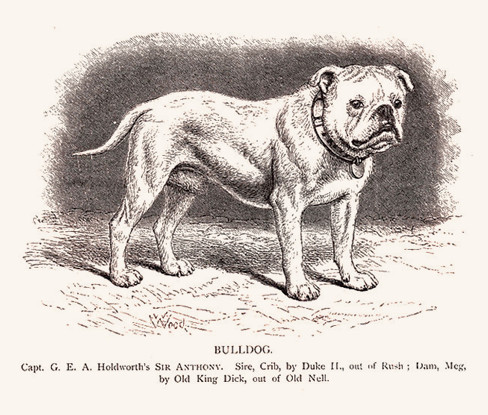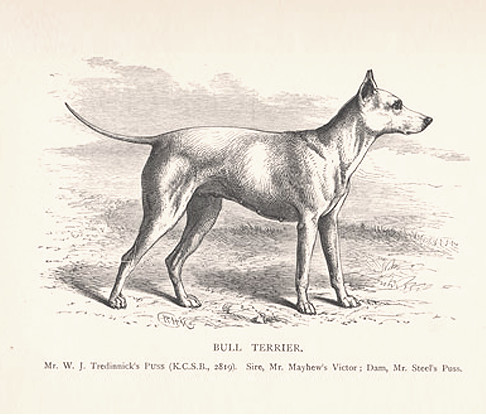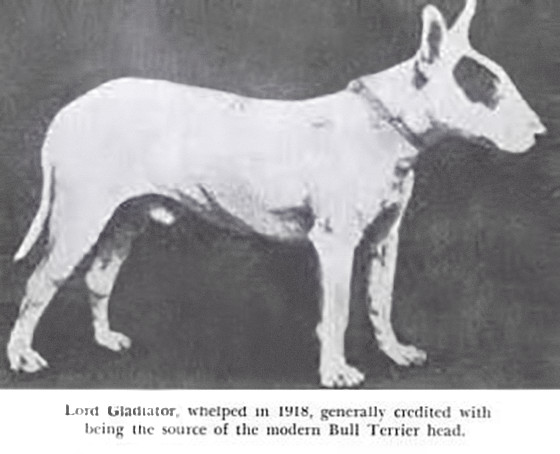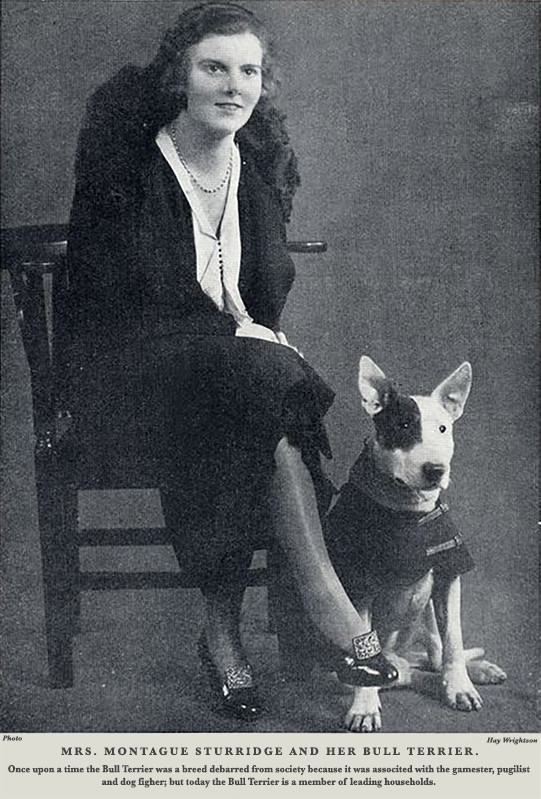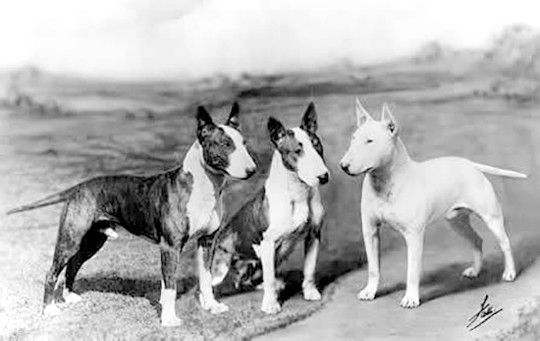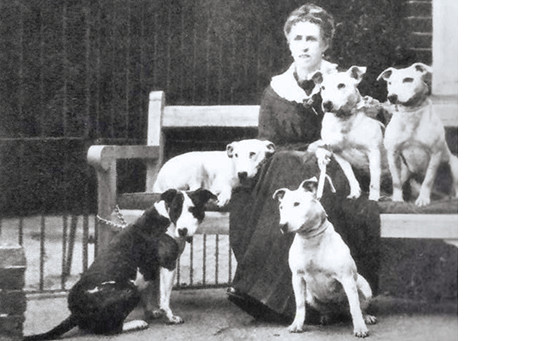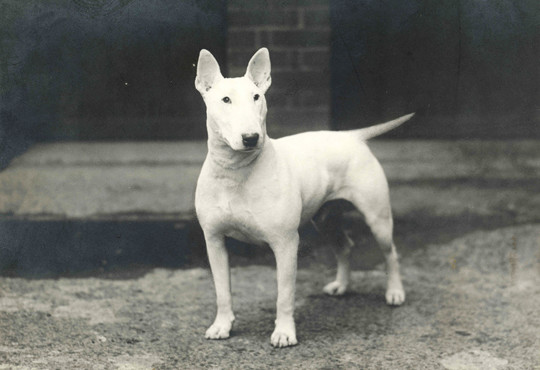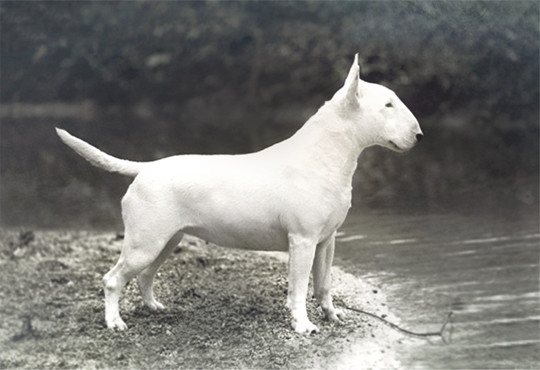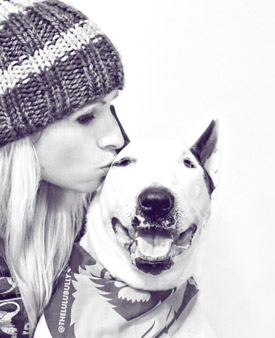The Gentleman’s Companion
It was mid 1800’s Victorian England, the end of the industrial revolution, that gave birth to the first ‘Bull and Terrier’ cross breeds. The strength and courage of the Bulldog, the intelligence and dexterity of the Terrier; while not inherently pleasing to the eye it was a union that saw fortune in the task of vermin control and, then legal (until 1835), gambling sports of badger baiting and pit fighting.
It was these rough and humble beginnings in which Birmingham breeder James Hinks saw greater potential. A well known dog dealer and repository owner, Hinks was a regular attendant in the relatively new world of dog shows. Exhibiting and breeding many different dogs, he attracted attention in 1860 with his prized Olde White Bulldog (notably more agile and less brachycephalic than the contemporary English Bulldog). It was undoubtedly with the help of this dog, his own examples of the White English Terrier (now extinct) and the Dalmation that he strove to refine the desirable strengths of character developed in the ‘Bull and Terrier’ into a dog with a balance of substance and a gracious appearance. It was May 1862 when Hinks appeared at the Cremorne Show in London with his white bitch named ‘Puss’, widely recognised today as the earliest example of the Bull Terrier.

